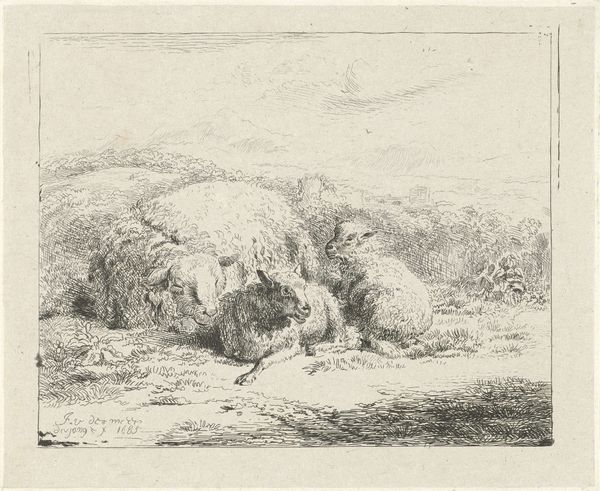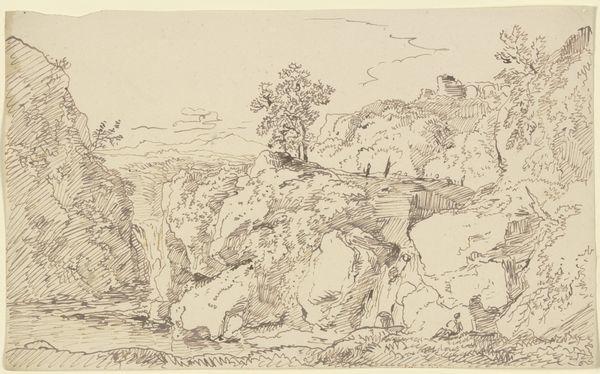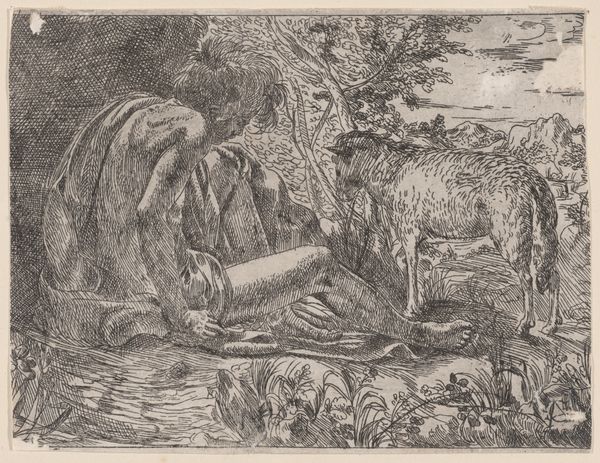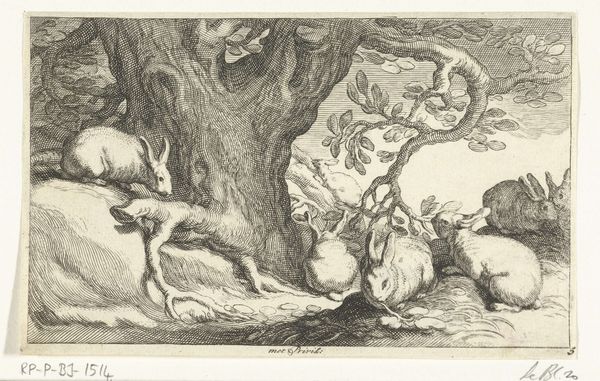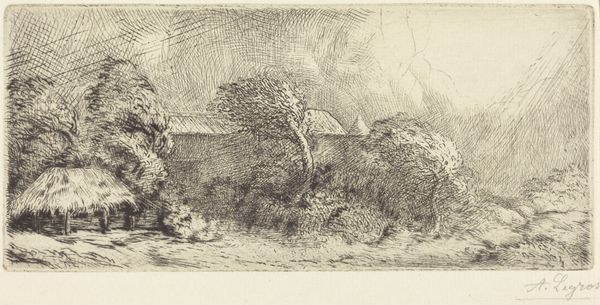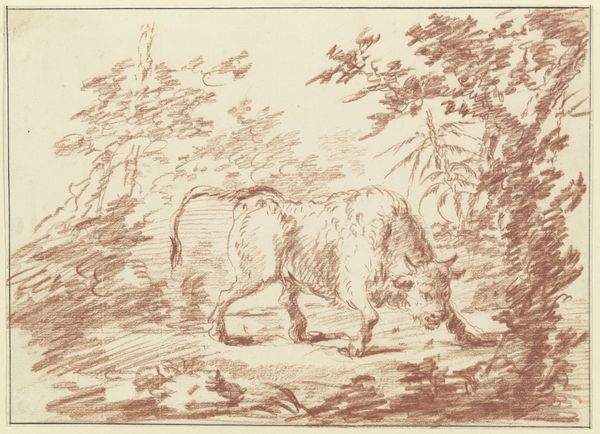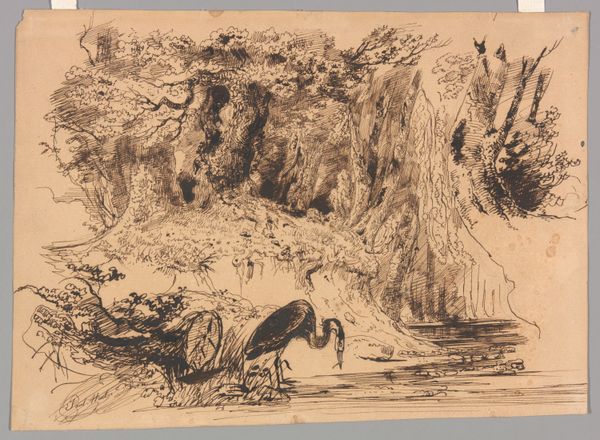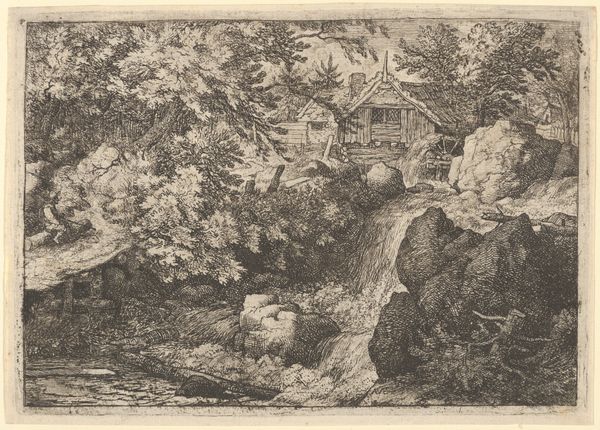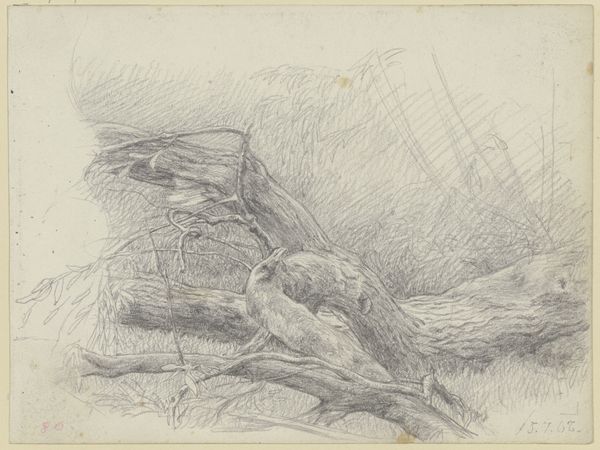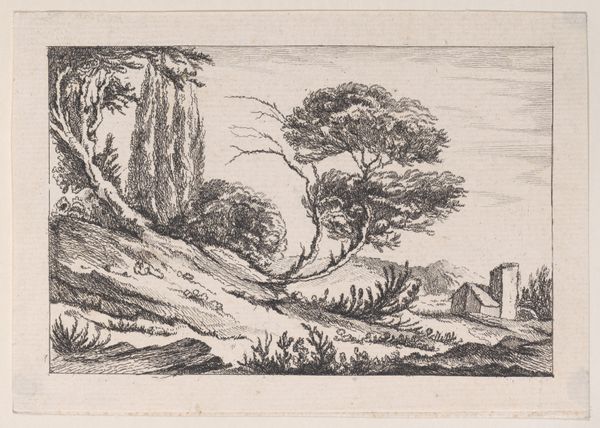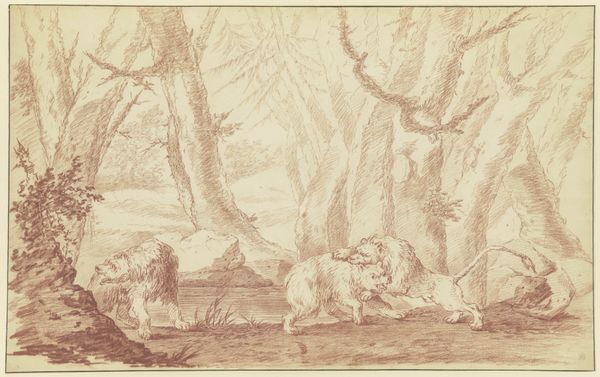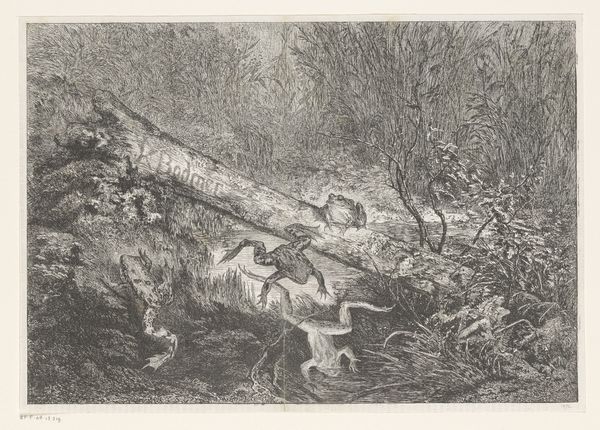
Piping satyr and two fauns, from "The Triton Group" 1655 - 1666
0:00
0:00
drawing, print, etching
#
drawing
#
baroque
# print
#
etching
#
landscape
#
figuration
#
history-painting
Dimensions: sheet: 3 11/16 x 8 3/16 in. (9.3 x 20.8 cm)
Copyright: Public Domain
Editor: This etching, "Piping Satyr and Two Fauns, from 'The Triton Group'," by Salvator Rosa, made between 1655 and 1666, feels incredibly unrestrained. The lines are so free and loose, almost chaotic. How do you interpret this work, thinking about the context in which it was made? Curator: This piece plunges us into the world of the satyr, a liminal figure often embodying marginalized desires and anxieties in 17th-century European culture. Rosa, through the etching, may be subtly commenting on the boundaries of acceptable social behavior, and how those in power police such norms. Look at the piping satyr himself: who is he performing for, and on whose terms? Editor: So, the act of playing the pipes could be seen as a commentary on power dynamics? Curator: Precisely. The performance – the art itself – is never neutral. It exists within a framework of who is seen, who is heard, and who benefits. And Rosa, by depicting these mythical beings in what seems a private moment, invites us to question the gaze, our own participation in observing these figures. Consider, too, how 'natural' the setting is: it reflects an ideal, but at what cost does that ideal come? Are we romanticizing a power structure? Editor: I see what you mean. It’s easy to get lost in the apparent freedom and wildness without thinking critically about the social commentary that could be present. It is definitely useful to bring in history and social norms to reveal so much more than just what is visually in front of me. Curator: Exactly! This approach lets us interrogate the art, and the world, with more intentionality and nuance.
Comments
No comments
Be the first to comment and join the conversation on the ultimate creative platform.
